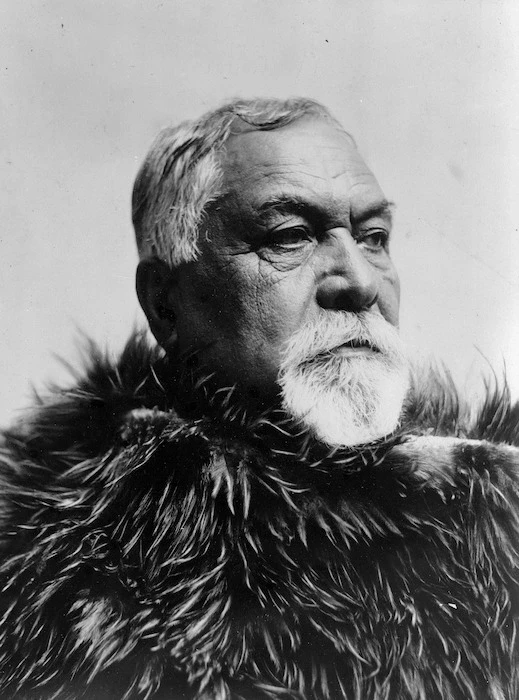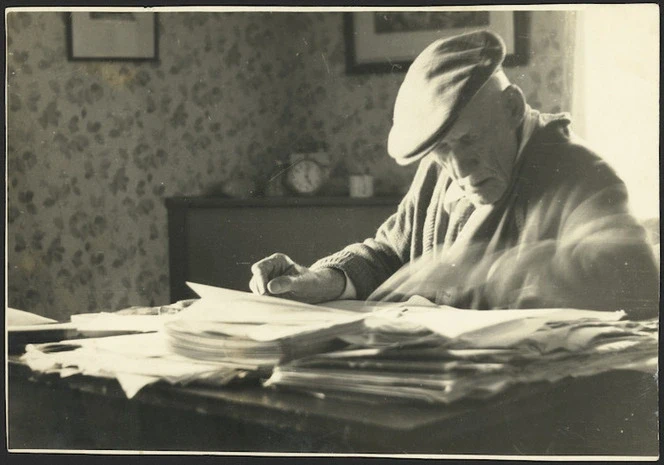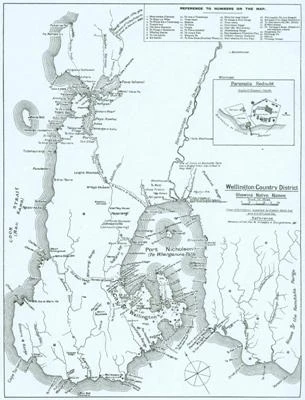Kōrero with Morrie Love of the Tenths Trust
In the early 1800s the stories behind the naming of the land in Te Whanganui-a-Tara were often sourced to Te Whatahoro Jury and three women - Ngarimu Mawene, Mere Ngamai and Rangiwahia Te Puni.

Hoani Te Whatahoro Jury. Ref: 1/2-024828. Alexander Turnbull Library, Wellington, New Zealand. /records/23175005
Te Whatahoro Jury
Te Whatahoro Jury was born 1841 in Hawkes Bay — his father worked for William Williams. In 1842 the family moved to Wairarapa. He became a scribe to Te Matorohanga and Nepia Pohuhu and was charged with recording tribal traditions on behalf of his iwi. Some of this material was used later, by Elsdon Best, T. W. Downes, S. Percy Smith and John White. He married seven times. He died 1923 and is buried at Papawai cemetery.
Ngarimu Mawene Hohua
Ngarimu Mawene is listed in documents held at Te Papa. Ngarimu Mawene may have been connected to Hohua Te Atuawera and Hariata Mawene, with links therefore Te Ngatoro and (first?) husband, Wakairianiwa. Te Ngatoro was, in turn, a daughter to Aniwaniwa and Tawhirikura. It is said that, as a young girl, Ngarimu danced on the beach at Pito-one as the "Tory Pioneers" arrived in 1839 ¹.
Mere Kapa Ngamai I
Mere Kapa Ngamai I was the daughter of Rawiri Kowheta and Maweuweu.
She married, firstly James Harrison, and their children were James Te Tana Harrison and Mere Kapa Ngamai II. Mere later married Wi Tako Ngatata. She was also known as Mere Ngawai o Te Wharepouri.
Mere was a well-known composer — two of her compositions which have survived:
- Whakawaiwai ai, and
- A bird song — what the tui says
(Link is to Legends of the Māori. Vol. I / James Cowan)
Rangi Te Puni
Rangi Te Puni is believed to have been born in Waipa Valley, with links to Tainui and Ngāti Rārua. She succeeded to land at Te Tau Ihu o te Waka. Rangiwahia,(Rangiwhaia) was the daughter of Rangitakaia, and grandchild of Hinehape.² Rangiwahia was the wife of Henare Te Puni, who in turn was the son of Honiana Te Puni and Wikitoria Muri-tu-waka-roto.

Gold, Charles Emilius, 1809-1871: Wairau April 1851.. Ref: A-329-014. Alexander Turnbull Library, Wellington, New Zealand. /records/23236682
James Cowan
James Cowan has written about Māori place names of Te Whanganui-a-Tara in the Evening Post, 1912. These are available on PapersPast, in the Evening Post:
- Evening Post, 8 June 1912
- Evening Post, 15 June 1912
- Evening Post, 20 July, 1912
Cowan's kōrero has been reproduced, also, in Pat Lawlor's book:
Old Wellington Days. Chapter 8: James Cowan and his Wellington Place-names.

James Cowan at his desk, writing. Ruscoe, Ivan, fl 1990s : Photographs relating to James Cowan. Ref: PAColl-5877-5. Alexander Turnbull Library, Wellington, New Zealand. /records/22311747
Threads are picked up again in:
A list of Māori place names of Te Whanganui-a-Tara concludes Elsdon Best's The land of Tara. Here is a map from that book.

Map at the front of The Land of Tara, by Elsdon Best
Te Whatahoro Jury's work in transcribing oral histories possibly, formed a basis for stories in Elsdon Best's - The land of Tara, published first in the Journal of the Polynesian Society, and then in book form, 1919.
Best's list of names was revised and greatly expanded by G Leslie Adkin in:
Surveyors
Māori have long had an interest in the spiritual value of land: it pervades their sense of identity and how they relate to others. But land is also the foundation of their survival, in economic as well as cultural terms ³
Boundary markers : land surveying and the colonisation of New Zealand / Byrnes, Giselle
Giselle Byrnes, writing of surveyors as Pākehā boundary markers, shows that these men were also naming the land, and "owning" the whenua for their colonial government in a way that parallels the Māori concept of Tapa Whenua.
Boundary markers suggest that the surveyors colonised the land through language, literally inscribing it with new meanings and ways of seeing: place naming and mapping are perhaps the best examples of this ⁴.
Surveyors extended their sketching skills to record not just Pākehā boundaries, but also snapshots of the life and times of our tūpuna.
Somes Island
Legend has it that both Matiu and Makaro Islands received their original Māori names from Kupe, the semi-legendary first navigator to reach New Zealand and get home again with reports of the new land. He named them after his two daughters (or, in some versions of the tale, nieces) when he first entered the harbour about 1000 years ago.
After European settlement, the island was known for over a century as Somes Island. In 1839 it fell under the control of the New Zealand Company along with much of the greater Wellington region.
The island was renamed after Joseph Somes, the company's deputy-governor and financier at the time. In 1997 however, the New Zealand Geographic Board assigned the official bilingual name of Matiu/Somes in recognition of the island's colourful European and Māori histories. ⁵
I look forward to Morrie Love's kōrero to reveal the layers of history that lie both beneath our feet and before our eyes, and to provide an opportunity to understand the heritage of Te Whanganui-a-Tara.